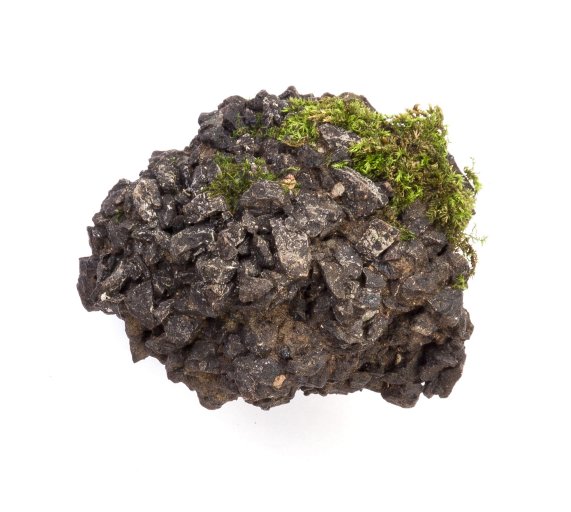The lump that this moss calls home is an asphalt concrete – a mix of bitumen tar binding together granite gravel – the stuff of road surfaces.
The bitumen is dug from deep seams under the ground, which were once a mass of the countless bodies of tiny algae, moss and other living things. These plants and creatures decompose, and under pressure transform first to peat, then coal, to bitumen, oil, petrol, and finally gas. Bitumen is the in-between stage – a black, hard, rubbery material, somewhere between a solid and a liquid, which melts to an evil-smelling sticky black goo, perfect for binding gravel and dust to form a surface that can take the constant battering of cars and trucks in a city.
I like the fact that this moss has found its way back to its bituminous ancestors.
The moss doesn’t mind that the lump is man-made, just that it’s got a nice, lumpy surface to get a purchase upon, and tiny bits of nutritious soil in those crevices to cling to – the minimum it needs to survive. I like the tenacity of it, like us hardened city-dwellers, clinging to the asphalt with tiny bits of nature in the cracks to keep us going.
Phytology, for me is one of those nourishing crevices, keeping me going when the city feels too unyielding and inorganic.


